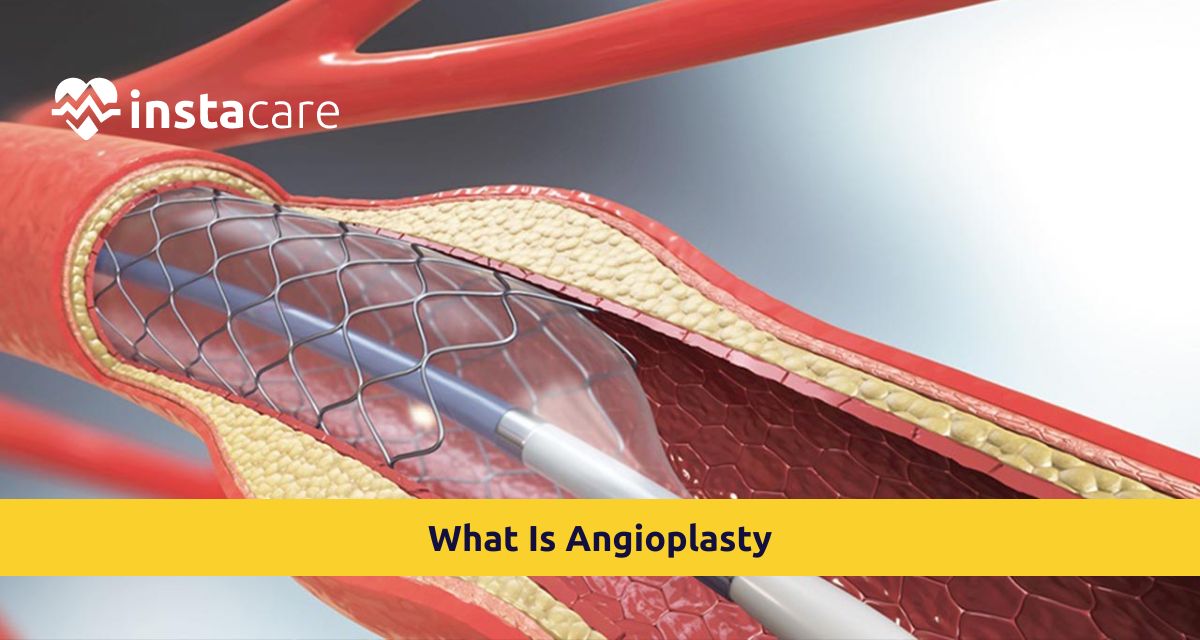Angioplasty is also known as balloon angioplasty. It's a
procedure that opens arteries to let blood flow through easily. This minimally
invasive procedure is used by healthcare providers at the tight spot in the
arteries where plaque makes the space inside an artery either too narrow or
blocks it. In this blog we have discussed the all detail information about
angioplasty.
Who needs to have angioplasty?
These are the people who have coronary artery disease or are
having a heart attack and may need to have coronary angioplasty. It can be
performed in other areas of the body with a problem of constricted or blocked
arteries. Among these are; your neck, arms and legs, kidneys and pelvis.
Angioplasty is supposed to let more blood getting to an arterial channel that
is too narrow and blocked by plaque.
It is feasible to minimize arterial blood supply to the heart through constriction of the arteries and for example, the effects of plaque, which are liked to closure of one or more of the arteries. This changes the nature of the arterial walls to leave tile or very small openings that allow little blood to pass through and deliver oxygen to the heart muscle causing chest pains, shortness of breath and in some cases heart attacks. These are the conditions that may bring the need for angioplasty:
- Stable angina
- Unstable Angina
- Severe coronary artery disease
Angioplasty Procedure
Angioplasty is usually carried out in a hospital or specialized cardiac catheterization laboratory. The time taken in the procedure depends with the nature of the case and may take as short as 30 minutes to a few hours at most. Here’s a step-by-step outline of the angioplasty procedure:
- Anesthesia
- Catheter Insertion
- Contrast Dye Injection
- Balloon Inflation
- Stent Placement (if necessary)
- Catheter Removal
- Monitoring
Post-Procedure Treatment
After such angioplasty, the treatment for recovery will take
the shape of time more or less according to the particular health and specifics
of the patient and the procedure. Among the most pivotal elements in this is as
follows:
1. Monitoring and Recovery
The treating physicians will monitor heart rhythm, blood
pressure, and oxygen saturation of the patient for early signs of
complications.
2. Activity Restrictions
Rest: Patients are typically advised to lie down all day
after the treatment. Gross activities are abstained for days to recover
completely.
- Gradual Return to Work: Usually, the patients can gradually
return to routine activities after a few days but have to be away from
strenuous exercises and heavy weighing for at least a week.
3. Medication
- Antiplatelet therapy: Common antiplatelet drugs used in
patient post-angioplasty will be aspirin or clopidogrel, among many others.
These drugs are used for the prevention of clotting around the stent and other
future cardiovascular events.
- Other drugs: Other drugs will be used based on individual
health needs. The other drugs may include statins for cholesterol,
beta-blockers for the rate control of the heart, or blood pressure medications
4. Follow-Up Visits
An important follow-up visit to the doctor will ensure that
the treatment is in order, so the recovery can be monitored and cardiovascular
health appraised, and in case of a necessity, medication or even life style
changes must be made.
View More: What Is The Average Age Of Heart Attack In Females
Risks and Complications of Angioplasty
Angioplasty is also a safe procedure though like all other
processes there comes a risk or complications. The following are just a few
examples:
1. Site of Catheter Placement:
Bleeding or hematoma can be seen at the site of catheter
placement, particularly in a patient who is on anticoagulation therapy. In some
cases, additional intervention may be required by medical professionals.
2. Allergic Reaction
Contrast Dye: Some patients are allergic to the contrast
dyes used during this procedure. All allergies should be discussed with the
provider.
3. Blood Clots
Stent Thrombosis: There is a potential for blood clots
forming on the stent that may cause the artery to become re-narrowed or even
cause a heart attack.
4. Artery Dissection or Rupture
Vessel Injury: At times, during the procedure, the artery
might get injured resulting in dissection of the artery wall or rupture.
Surgical intervention may be needed.
5. Kidney Damage
Contrast-Induced Nephropathy: Patients who have had
experience of renal impairment are at a greater risk of experiencing renal
damage from the contrast in this procedure. Such patients are usually covered
prior.
Life Expectations Post-Angioplasty
Patients undergoing an angioplasty generally have good life
expectations, especially when combined with changes to lifestyle and continued
medical management. Lifelong follow-up is described using the following
criteria:
1 Improvement in Quality of Life
Yet, still, most patients post-angioplasty will note relief
of severe symptoms like chest pain or pressure and shortness of breath. Indeed,
this may improve the quality of life for the patient and can make them
contribute to daily activities more constructively.
2. Restenosis Risk
Angioplasty is effective but complications related to the
procedure itself exist. Specifically, there exists the possibility of
developing restenosis, a re-narrowing over time of the treated artery. An
angioplasty with stenting will prevent restenosis, but some will still develop
the complication and in some cases have further procedures done.
3. Lifestyle Modification
Patients have to adopt the changes in heart-healthy lifestyle measures to achieve better outcomes after angioplasty and long-term outcome. The same includes:
- Regular physical activity helps maintain heart health as
well as manages weight and reduces blood pressure.
- Smokers can most effectively minimize the long-term risk of
cardiovascular disease by quitting smoking.
- Stress Management: Smokers may reduce their stress using
techniques such as relaxation, mindfulness, or counseling that will even
enhance their heart health.
4. Ongoing Medical Care
Patients must continue regular close working with physicians in follow-up and review of their changing medications if appropriate. Appointments and scheduled tests will help in the early detection of potential complications.Conclusion
Angioplasty is a treatment absolutely worth being done, which will dramatically change the quality of life for most of the patients with a disease caused by coronary artery disease and other types of cardiovascular diseases. Further than that, it also relieves symptoms since through restoration of the blood flow to the heart, it also prevents serious complications and hence improves the general well-being in comparison.A note in this regard is that angioplasty is not a cure for heart disease. Instead, it is merely a step towards a management procedure concerning cardiovascular health. A patient has to continue living life but with some necessary adjustments, and compliance with medication and regular check-ups.
Please book an appointment with the best Cardiologist in Lahore, Karachi, Islamabad, and all major cities of Pakistan through InstaCare, or call our helpline at 03171777509 to find a verified doctor for your disease.

